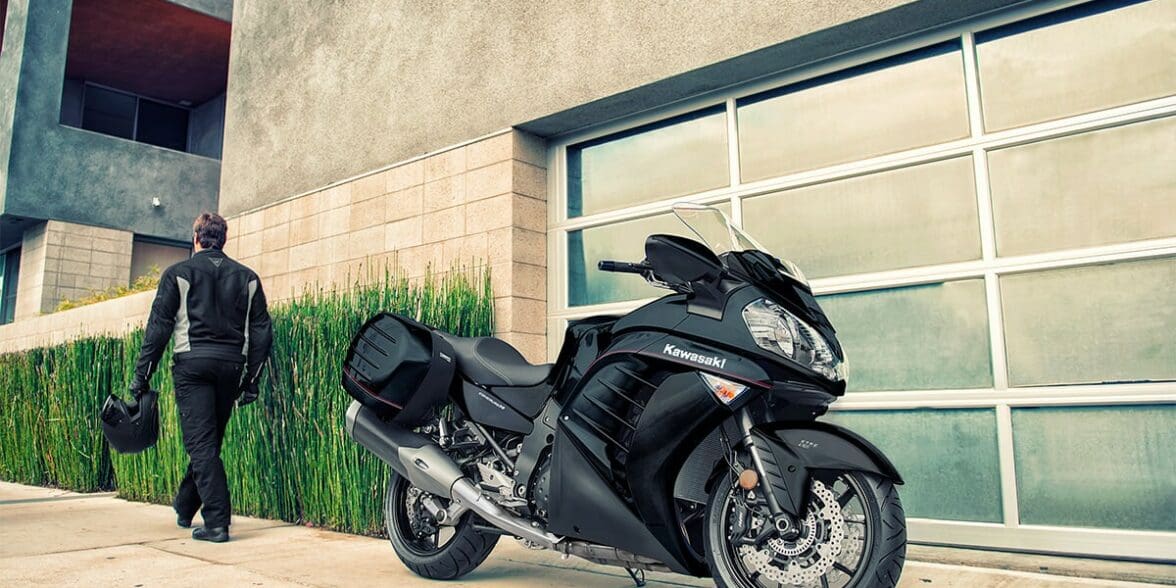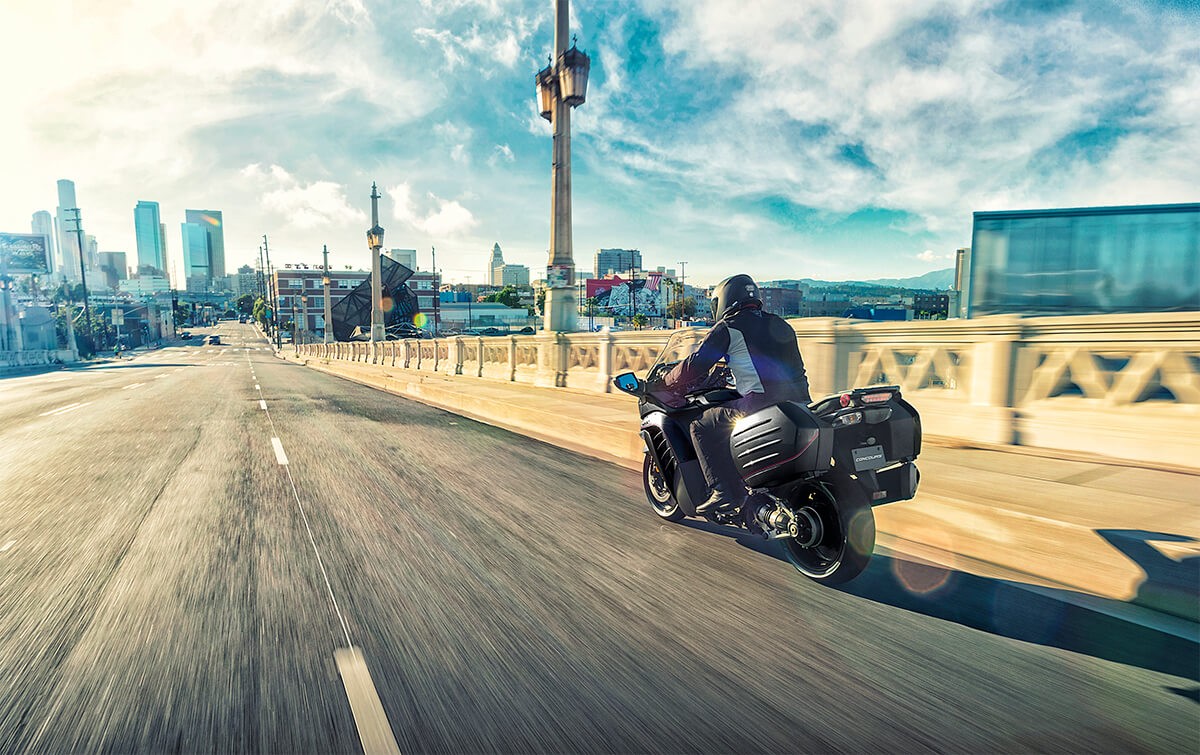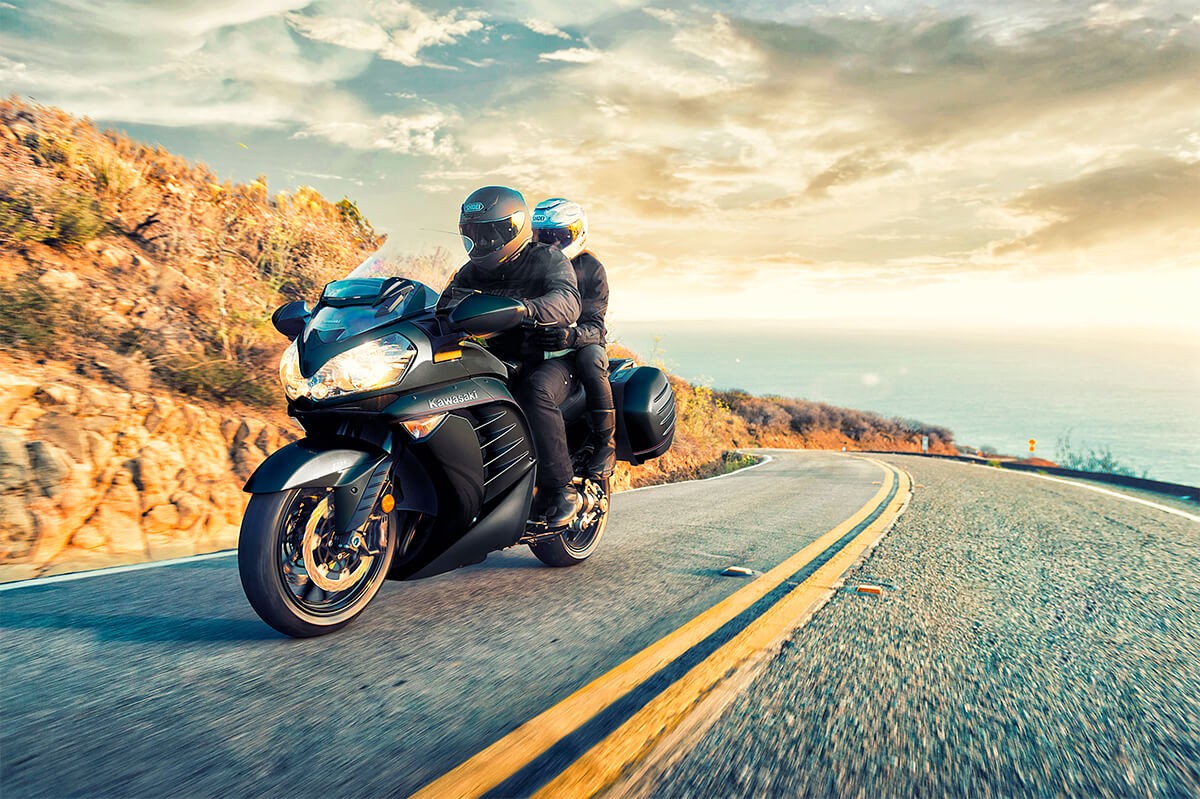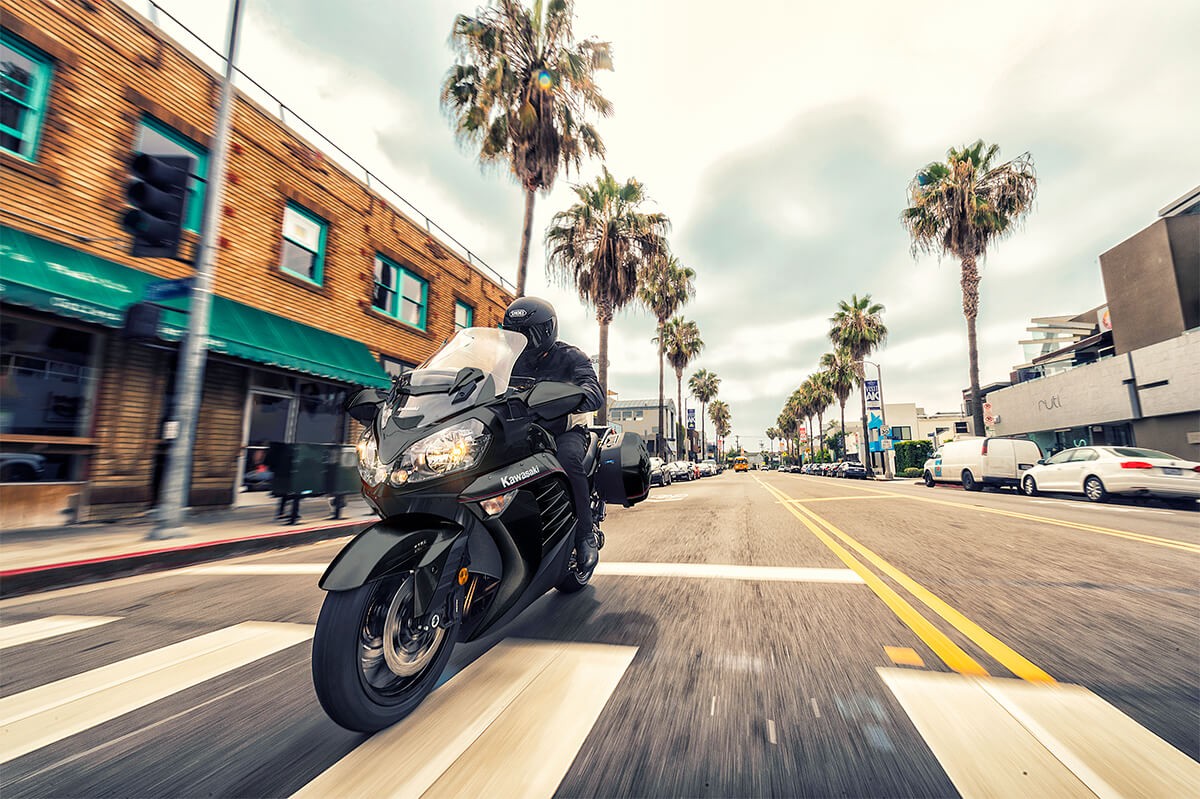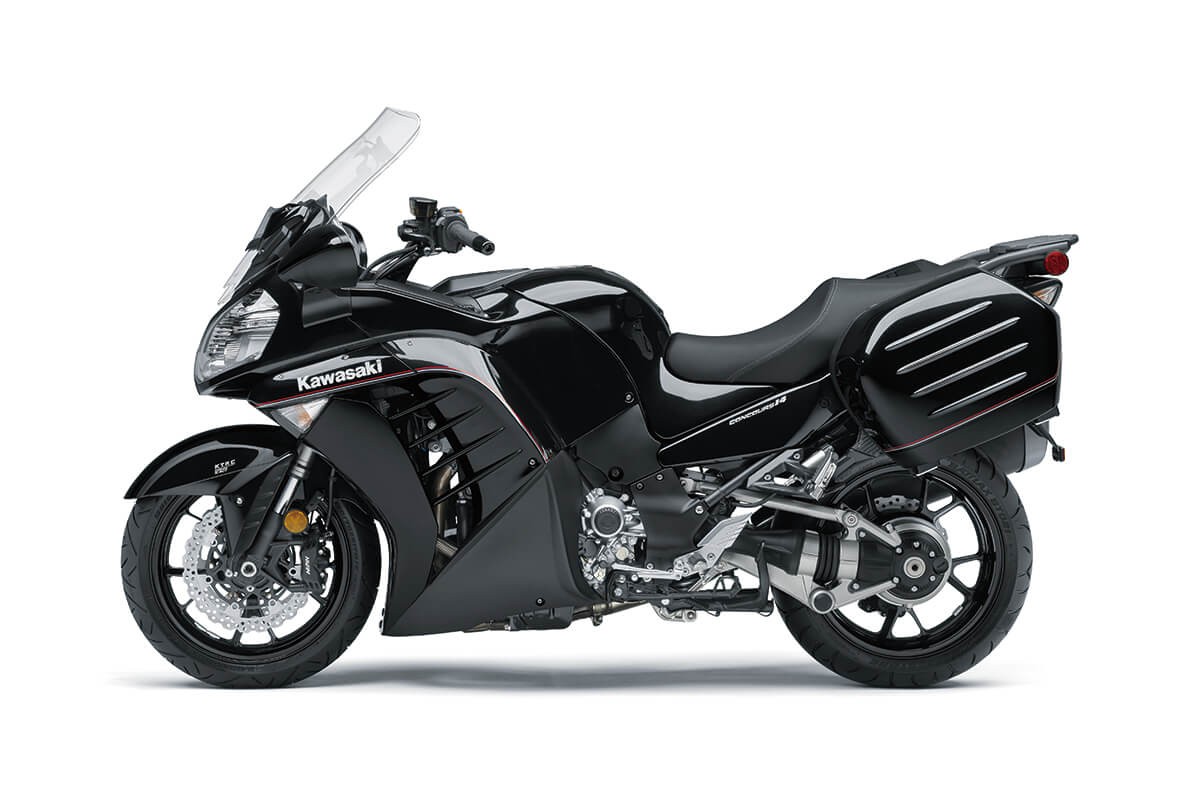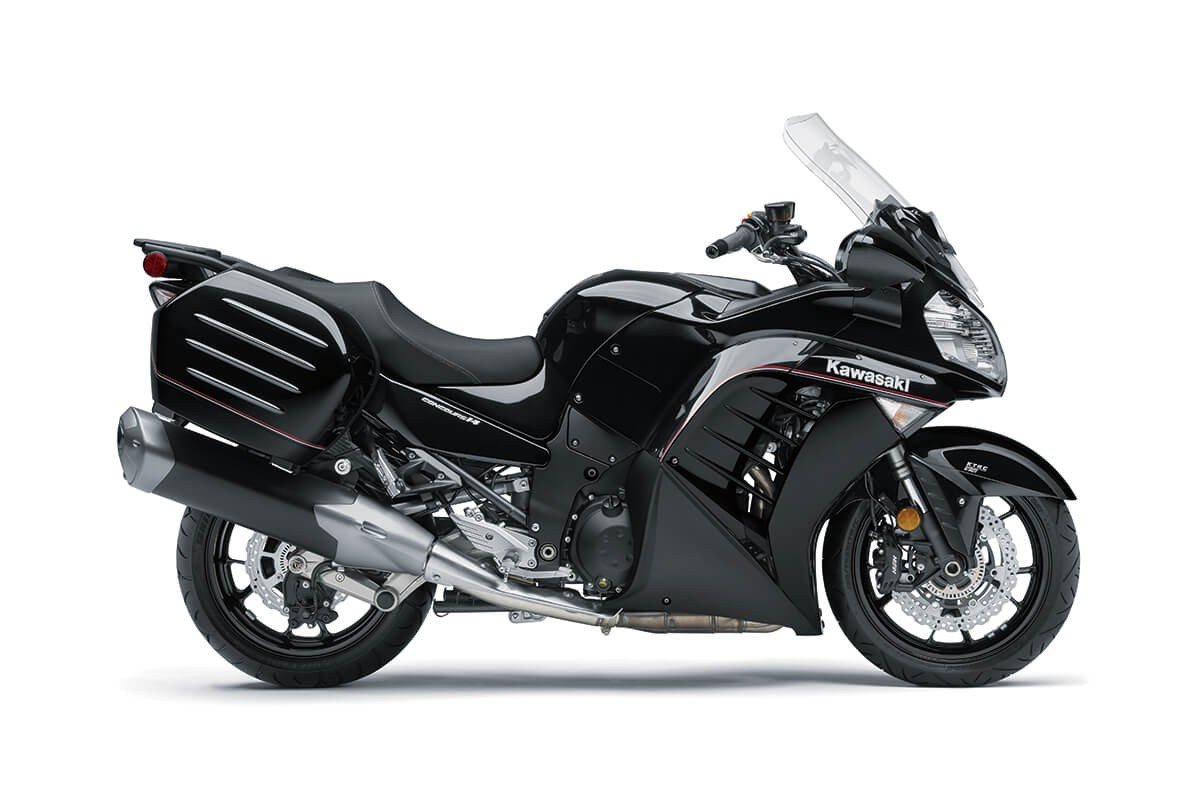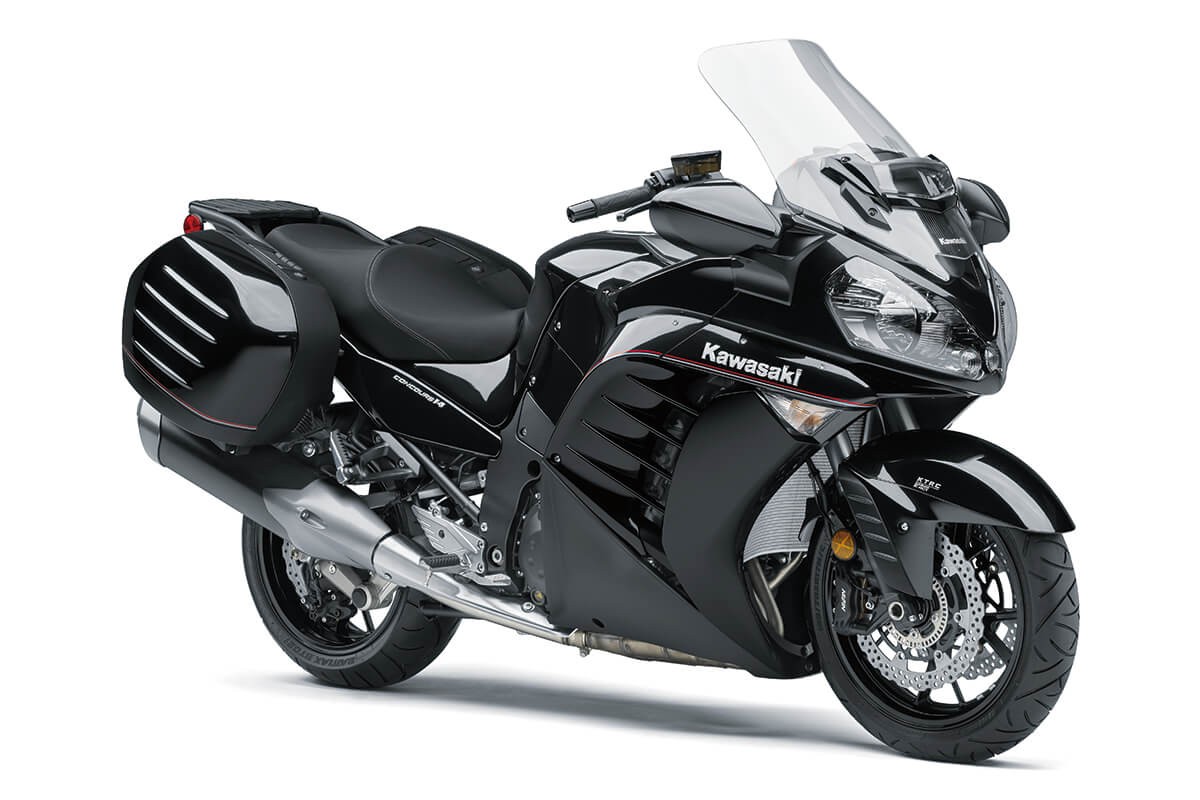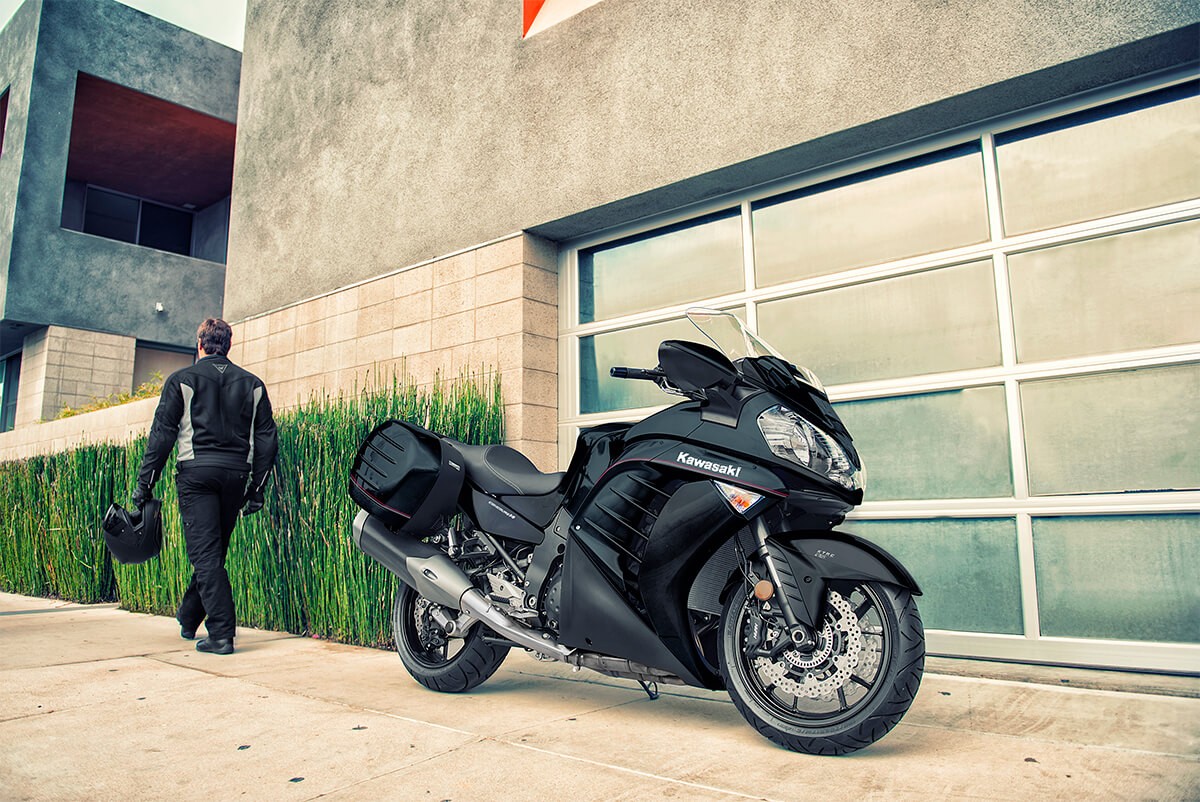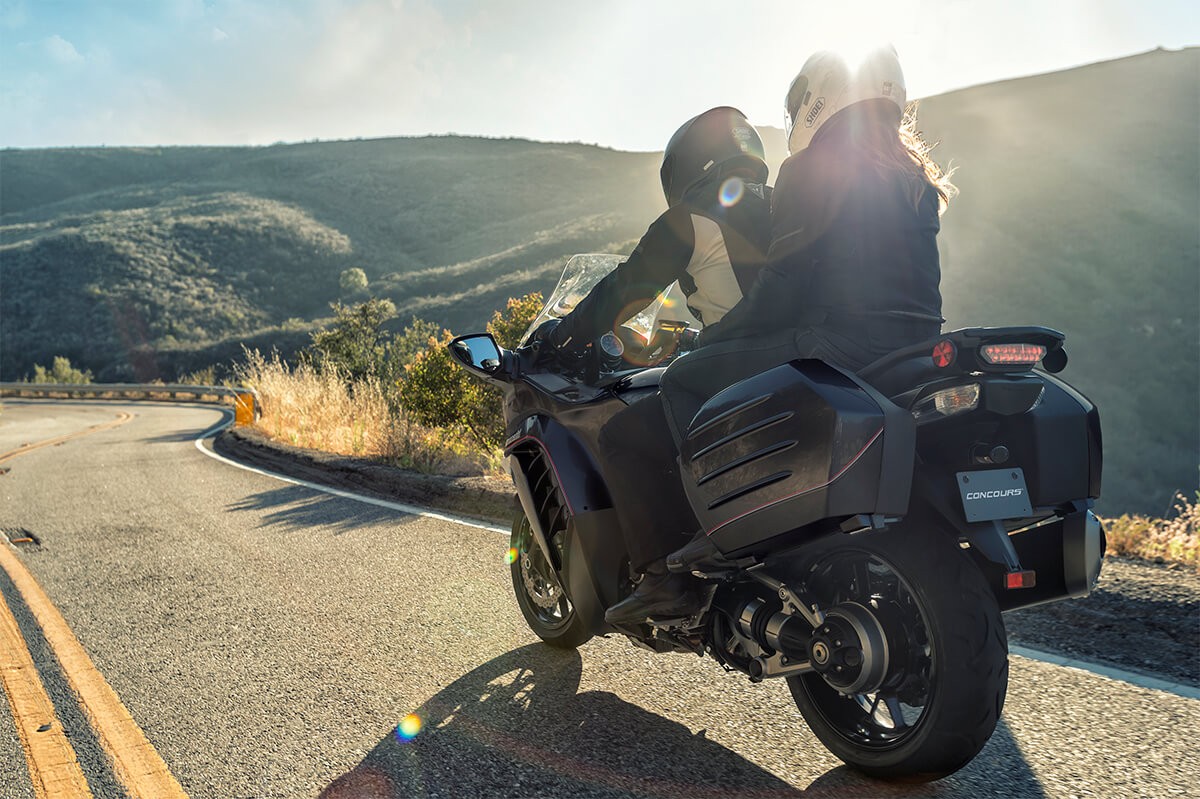The 2022 Kawasaki Concours 14 ABS: The Ultimate Tourer for the Supersport Crowd
Contents
An aggressive-looking bike with plenty of comfort for touring and handling reminiscent of your favorite supersport models—for less than $20,000 USD? That’s not an impossible dream; it’s the 2022 Kawasaki Concours 14 ABS.
The Concours 14 has been around for years, and Kawasaki hasn’t done much to change it during that time. No, it might not feature quite as many rider aides as rival bikes from BMW or Yamaha, but its combination of price, performance, and comfort for long-distance touring make this an attractive bike in its segment.
For power, you’ve got a 1,352cc in-line four-cylinder engine pumping out 158 HP @ 8,800 rpm and 100 lb-ft @ 6,200 rpm, the same as the engine in the previous year’s model. The only update for 2022 is the new color scheme: Metallic Spark Black, which helps the bike’s already-edgy appearance evoke some extra badassery.
Rider aides here are simple, but not absent: you get Kawasaki Traction Control, fuel economy assistance mode, and an economical riding indicator to help make sure you don’t run out of gas between towns along the highway. There are some nice chassis management features, too—like a tire pressure monitoring system, K-ACT (Kawasaki Advanced Coactive-Braking Technology) ABS, and a monocoque frame.
Kawasaki isn’t always the flashiest of the big Japanese motorcycle makers (although sometimes they like to flaunt their ridiculous engineering prowess with models like the Ninja H2R)—but this bike offers an incredible amount of value for sport-touring riders, especially those who plan on carrying passengers over long distances.
You’ll find the 2022 Concours 14 ABS among this year’s lineup of Kawasaki motorbikes for $15,999 USD / $18,999 CAD.
Model Overview
General Info
- Price: $15,999 USD / $18,999 CAD
- Key Features:
- Monocoque frame
- K-ACT (Kawasaki Advanced Coactive-Braking Technology) ABS & Kawasaki Traction Control
- TPMS (tire pressure monitoring system)
- Fuel economy assistance mode & economical riding indicator
Main Specs
- Engine: 1,352cc, liquid-cooled, 4-stroke, DOHC, 16-valve in-line four-cylinder
- Power: 158 HP @ 8,800 rpm
- Torque: 100 lb-ft @ 6,200 rpm
- Curb Weight: 672 lbs (305 kg) without saddlebags
- Seat Height: 32.1 in (815mm)
Competitors
2022 Kawasaki Concours 14 ABS Specifications
ENGINE |
|||
| Engine | 1352cc, 4-stroke, 4-cylinder, DOHC, 4-valve, liquid-cooled | ||
| Power | 158 HP | ||
| Bore x Stroke | 84.0 x 61.0mm | ||
| Compression Ratio |
10.7:1
|
||
| Fuel System | DFI® with 40mm throttle bodies (4) | ||
| Starter | Electric | ||
| Maximum Torque | 100.5 lb-ft | ||
DRIVETRAIN |
|||
| Clutch | |||
| Transmission | 6-speed | ||
| Final Drive | Sealed chain | ||
CHASSIS |
|||
| Suspension Front | 43mm inverted, telescopic fork with adjustable rebound damping and spring preload/4.4 in | ||
| Suspension Rear |
|
||
| Brakes Front | Dual floating 310mm petal-style discs with four-piston calipers, ABS | ||
| Brakes Rear |
Single 270mm petal-style disc, single-piston caliper, ABS
|
||
| Tires Front | 120/70 ZR-17 | ||
| Tires Rear | 190/50 ZR-17 | ||
| Fuel Tank Capacity | 5.8 gal | ||
| Color |
Metallic Spark Black
|
||
ELECTRICAL |
|||
| Ignition | |||
| Spark Plugs | |||
| Headlight | LED | ||
| Tail Light | LED | ||
DIMENSIONS |
|||
| Overall Length | 87.8 in | ||
| Overall Width | 31.1/39.4 wo/w saddlebags | ||
| Overall Height | 52.9 in/57.7 in (windshield down/up) | ||
| Wheelbase | 59.8 in | ||
| Ground Clearance | 4.9 in | ||
| Seat Height | 32.1 in | ||
| Curb Weight | 690.2 lb (672.5 w/o saddlebags)* | ||
WARRANTY |
|||
| Warranty | 12 Months | ||
| Kawasaki Protection Plus | 12, 24, or 36 months | ||
2022 Kawasaki Concours 14 ABS Features
Dual Throttle Valves
On models with dual throttle valves, there are two throttle valves per cylinder: in addition to the main valves, which are physically linked to the throttle grip and controlled by the rider, a second set of valves, opened and closed by the ECU, precisely regulates intake airflow to ensure a natural, linear response. With the air passing through the throttle bodies becoming smoother, combustion efficiency is improved and power is increased.
Economical Riding Indicator
While effective vehicle speed and engine speed may vary by model, paying attention to conditions that cause the “ECO” mark to appear can help riders improve their fuel efficiency – a handy way to increase cruising range. Further, keeping fuel consumption low also helps minimize negative impact on the environment.
Fuel Economy Assistance Mode
Maximizing the effectiveness of the Fuel Economy Assistance Mode requires a gentle use of the throttle. Nevertheless, especially when used in conjunction with the Economical Riding Indicator, this mode can contribute to significant savings in fuel costs over long distances.
KTRC (Kawasaki Traction Control)
Less intrusive modes maintain optimum traction during cornering. Designed with sport riding in mind, they facilitate acceleration out of corners by maximizing forward drive from the rear wheel. And because Kawasaki’s sophisticated software bases its dynamic analysis on the chassis’ orientation relative to the track surface (rather than relative to a horizontal plane), it is able to take into account corner camber, gradient, etc., and adapt accordingly.
In the more intrusive modes (and for some models, in any mode), when excessive wheel spin is detected, engine output is reduced to allow grip to be regained, effectively enabling riders to negotiate both short, slippery patches (train tracks or manhole covers) and extended stretches of bad roads (wet pavement, cobblestone, gravel) with confidence.
K-ACT (Kawasaki Advanced Coactive-braking Technology) ABS
Complementing its standard ABS function, K-ACT ABS links the front and rear brakes. It monitors the brake force the rider is exerting at both the front and rear, and takes into consideration vehicle speed to ensure highly effective braking while maintaining chassis stability.
For example, let’s say the rider pulls on the front brake lever. To keep the bike from pitching forward, the ABS ECU actuates the rear brake (via fluid pumps) to ensure that front-rear balance is maintained. Should the rider push the rear brake pedal, the system actuates the front brake as well to distribute the load more evenly so that the rear wheel does not lock up. Based on the vehicle speed, K-ACT decides the optimum hydraulic pressure to send to each caliper, ensuring that even with a heavy motorcycle, stable braking performance is possible.
Accordion Title
When the key fob is close to the bike, the signal it sends out is picked up and recognized by the KIPASS unit in the bike. Like immobilizer keys, each key fob has a unique signal, making this system also useful as a theft deterrent. The key fob can be recognized when in a jacket pocket, so there is no need for the rider to remove the key to operate the bike’s main switch.
*This system uses the encryption algorithm “MISTY” developed by MITSUBISHI ELECTRIC CORPORATION.
Monocoque Frame
The aluminum monocoque frame was originally developed by Kawasaki in the 1980s for their World Grand Prix works racer. In an era where steel pipe frames were the norm, the aluminum monocoque frame that debuted on the KR500 took the world by surprise. First featured on a mass-production model on the 2000 Ninja® ZX™-12R, this original Kawasaki technology has evolved and can be found on some of our large-displacement flagship models.
2022 Kawasaki Concours 14 ABS Photos
2022 Kawasaki Concours 14 ABS Videos
Is this the World’s Fastest Production Sports Tourer: Kawasaki Concours 2022
2022 KAWASAKI CONCOURS 14 ABS
Links
Kawasaki Official Websites


